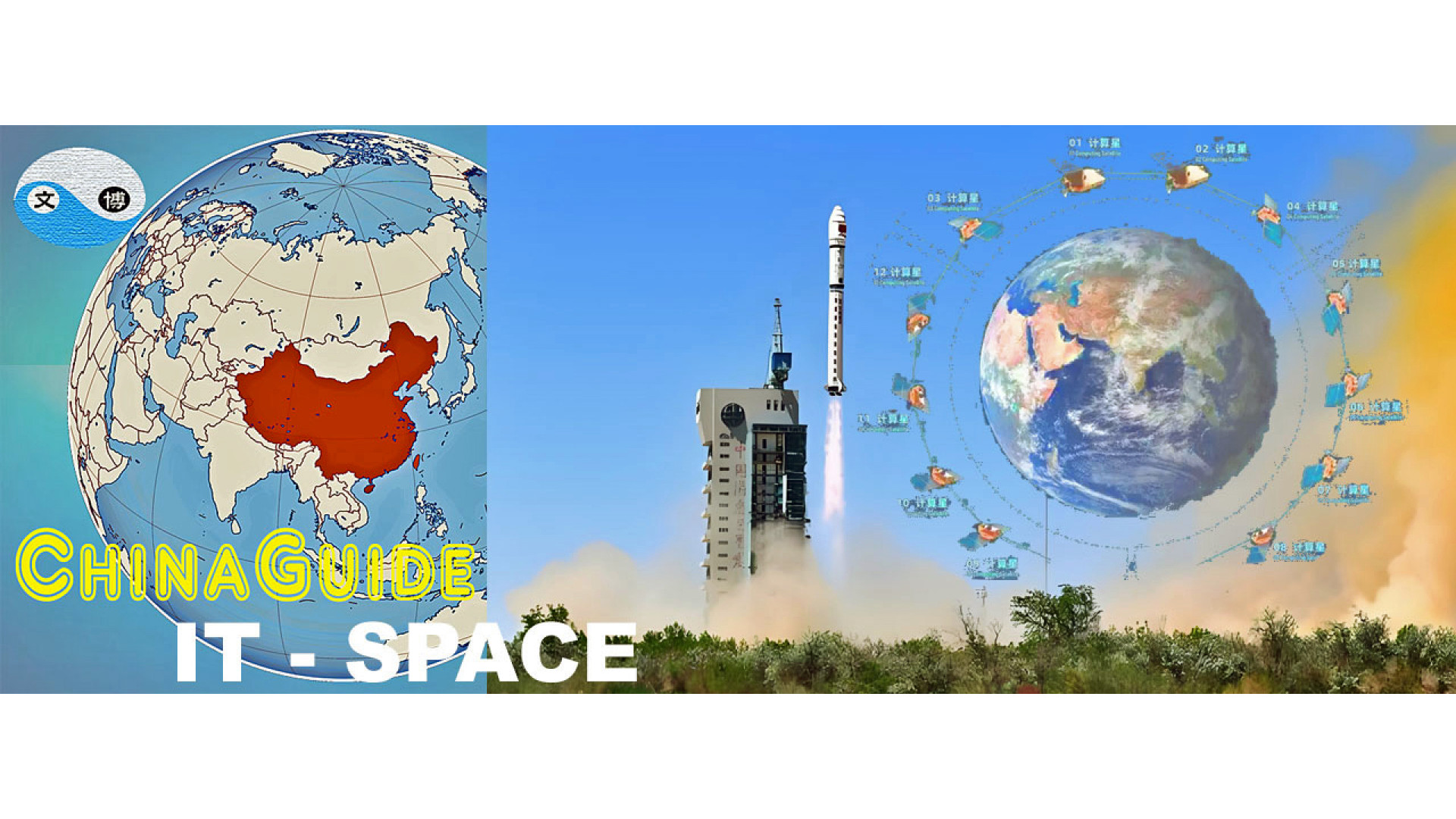On May 14 at 12:12, China’s Long March 2D carrier rocket successfully deployed the Space Computing Satellite Constellation into its predetermined orbit from the Jiuquan Satellite Launch Center. This milestone marks the official entry of China’s first fully interconnected space computing constellation into the networking phase.
China Aerospace Science and Technology Corporation’s commercial rocket division served as the general contractor for the launch. The mission employed a unique "top-mounted main satellite + side-mounted slave satellite" configuration: two main satellites were vertically stacked at the top of the fairing, while 10 slave satellites were side-mounted in two layers (five per layer) within the barrel section. The deployment involved four precise satellite-rocket separations—first the top-mounted main satellites, followed by simultaneous releases of the side-mounted satellites on each layer. Advanced flight timing optimization and attitude adjustment technologies ensured separation safety while minimizing disturbances to the rocket’s final stage.
The 12 newly launched computing satellites are each equipped with onboard intelligent computing systems and inter-satellite communication capabilities, enabling full-orbit interconnection and in-orbit computational processing. Together, they will form a space-ground integrated network. Key specifications include:
Computing Power: Up to 744 TOPS per satellite, with a combined computing capacity of 5 POPS when interconnected.
Storage Capacity: 30 TB across the constellation.
Communication: Maximum inter-satellite laser communication speeds of 100 Gbps.
Additionally, the satellites feature an 8-billion-parameter space-based AI model capable of processing L0-L4 satellite data in orbit. They will conduct on-orbit tests, including cross-orbit laser communication and astronomical observations.
This launch represents the inaugural mission for two major initiatives:
- "Three-Body Computing Constellation" (led by Zhijiang Laboratory): A future thousand-satellite infrastructure designed to overcome traditional satellite data processing bottlenecks by enabling real-time in-orbit computation, accelerating AI applications in space.
- "Star Computing" Plan (by Guoxing Aerospace): A network of 2,800 computing satellites interconnected with over 100 ground-based computing centers, forming a unified space-Earth computing system.
The successful deployment of this constellation heralds a new era in global space computing, shifting reliance from ground-based to in-orbit processing. This leap forward promises unprecedented improvements in data efficiency and real-time performance, positioning China at the forefront of space-based AI and next-generation industrial innovation.
China’s Constellation Illuminates the AI Frontier in Space
The integration of artificial intelligence (AI) into space technology is unlocking unprecedented possibilities—giving rise to space-based intelligence and fostering a new ecosystem spanning satellite manufacturing, AI chips for deep space applications (DBS AI), inter-satellite communications, and on-orbit computing platforms. This end-to-end framework, from hardware to software and from platforms to services, is laying the foundation for next-generation digital infrastructure on a global scale.
By leveraging in-orbit computing and ultra-high-speed inter-satellite links, China’s space computing constellation is constructing a distributed, worldwide computing network. This system enables real-time data processing and seamless connectivity, powering advanced applications such as:
-
Digital twins (high-fidelity virtual replicas of physical systems),
-
Intelligent manufacturing (AI-driven industrial automation),
-
Smart cities (data-optimized urban management).
Such capabilities are poised to accelerate the high-quality growth of the digital economy, transforming how industries operate and innovate.
As China’s constellation lights up the "AI nebula" in orbit, it marks a pivotal shift—where space becomes not just a domain for exploration, but a dynamic, intelligent platform driving global technological progress.
SMG 《锚点》: 从5G到6G,通信将去往何方?专家分析::应结合人工智能,把天地连接起来!
聚焦全球科技创新的关键“锚点”,通过“科学家对话科学家”的节目模式——一个全球前沿的科技热点、一位战略科学家、一位兼具学术背景与公众传播力的科学对谈人,打造具有思维厚度的科学对话,普及科学知识,提升全民科学素养。
CCTV【新闻直播间】: 全球首个太空计算卫星星座成功入轨 | 新闻来了 News Daily
太空算力“高”在哪儿?太空从此有了AI大脑,中国将打造2800颗算力卫星的天基算力网
算力上天:太空从此有了AI大脑
中国工程院院士 之江实验室主任 王坚:我们讲了那么多年的云计算,事实上我们的计算是在地面上,一个自然的问题,就是我们能不能把计算带到太空去,因为那里有更多的需求。在2023年的时候,在太空上,大概有7000多个在轨卫星,最大的变化是在下面的几年,可能是三年,可能是五年,大概会有8万个卫星在上面,会有10倍以上的卫星在上面,这是一个非常大的数字和变化。
但是真正的困惑是太空的算力远远不足以满足这些卫星对算力的需求,一个最简单的问题就是数据传不回地面,无效的数据多,遥感卫星拍了不该拍的照片,都是云层,当然很重要的一件事情就是数据的时效差。这就是为什么到今天为止,遥感卫星还是很难在应急救灾情况下起作用,时效是一个致命的问题。
今天卫星只有通信、导航、遥感这三类卫星,是不是会有第四类卫星出来?我们把它叫做计算卫星。所有的遥感卫星,在天上都是独立的,它们唯一的通讯是跟地面通讯,这些卫星是不是能够互通互联?这就是计算星座最基本的出发点。
太空算力的意义与实际应用
算力上天,将给我们带来什么呢?专家介绍,这不仅是推动太空技术发展,比如为近地轨道的航天器、月球、火星探测等提供关键算力的支持,还为未来大规模的算力验证以及地面、低空场景支持开辟了新的一种可能。
国星宇航执行副总裁 赵宏杰:让卫星互联互通,在太空侧提供高性能计算和数据处理的能力,将进一步改变科学研究的范式,为众多新质生产力的场景开创创新应用的新土壤。比如我们在赋能对地观测和物联网的领域,基于强大的天基计算与互联互通,可以将传统卫星的数据采集到信息服务的周期,从月级、周级或者天级的响应时间大幅缩短至秒级。通过红外ADS-B等多种应用载荷搭载,能够提供全球林火秒级监测感知,低空飞行器实时监测与定位,可广泛支持应急处突、防灾减灾、低空经济等低延时的需求场景。
除了时间维度的赋能,在空间维度上,太空计算中心还可以赋能卫星数据,从二维到三维的在轨实时处理,可面向数字经济场景支撑卫星三维数字孪生等应用方向,也可为低空经济场景提供低空飞行器卫星三维导航应用,又可为机器人场景提供具身智能全息城市训练场等支持。在科学探索方面,太空计算中心也可以扮演太空智能中枢的角色,广泛支持海量深空探测数据的实时在轨计算与处理,助力深空探测任务的计算需求与任务规划的动态优化。


